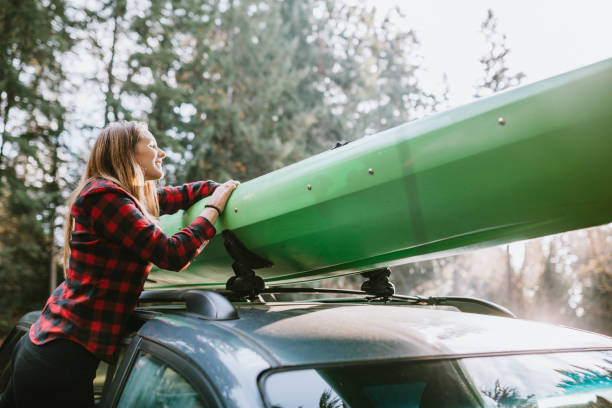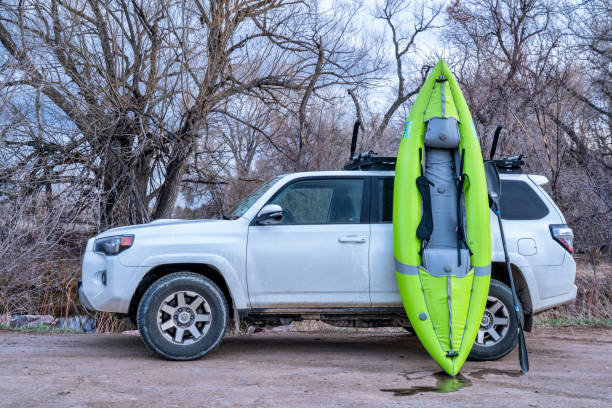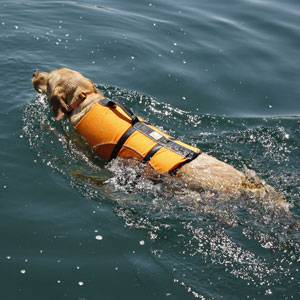
If you are transporting a kayak on the roof of your vehicle, you must tie it down correctly. Therefore, you’re probably wondering how to tie a kayak to a roof rack. This stops it from getting damaged as well as coming off while you are on the road.
Tying down a kayak can be quite challenging, especially when you are doing it for the first time. But it does get easier once you get into the swing of things.
Regardless of how easy or difficult it is for you, it is important to make sure that all kayaks on the roof of your vehicle are securely tied down before hitting the road. This article will provide you with the steps to correctly tie a kayak to a roof rack.
Table of Contents
How to Tie a Kayak to a Roof Rack: Having the Right Supplies
Padding
The first thing you have to do is to get padding for your kayak roof rack. Installing padding on your kayak roof rack before placing your kayak on it will prevent possible damage to the vessel once you are on the road.
To do this, you can use padding blocks or a foam block that sits just above the roof rack bars. You could also get padding material to wrap around the roof rack bar. Then, hold the padding in place with Velcro ends. High-quality roof rack padding can be purchased either at an outdoor goods store or online.
Bow and Stern Lines
While most people only consider straps when securing their kayaks to a roof rack, you still need a bow and stern lines. These are ropes or straps used to secure the bow and stern parts of your kayak to your car roof.
The bow and stern lines keep your kayak down, preventing it from detaching from the roof rack when you are going down the highway. To make sure your kayak is correctly secured to your car roof rack, it is important that it has a cam ratchet or buckle. This can help you easily secure the lines in place.

Kayak Straps
Next, you need to have kayak straps or a tie down strap with cam buckles. When you use straps specifically designed for tying kayaks down on a car roof, you make the entire process easier and safer.
This is why you need to use a kayak strap with cam buckles. They allow you to securely fasten the kayak to the roof of your vehicle. This kind of tie down strap can tighten your kayak into place without going overboard and causing damage to your car or the roof rack system.
A kayak strap with cam buckles can be purchased at any sporting goods outlet or online.
How to Tie a Kayak to a Roof Rack: The Process
Using Bow and Stern
First, connect the bow line to the kayak’s front end. To do this, you need to insert the hook located at the end of the bow line through the loop on the kayak’s carrying handle. Secure the hook nicely before moving on to the next step.
The other end of your bow line should be connected to your vehicle’s tow hook located under the bumper. It looks like a small metal ring. You should never connect your bow line to any plastic part of your vehicle. Doing so could cause some serious damage to your vehicle.
If your vehicle doesn’t have a tow ring or hook, you might need to purchase a hood loop strap. A hood loop strap can be attached to the bolt heads underneath your vehicle’s hood. Once bolted on, cover the hook and make certain that the hood loop sticks out from under the hood. Now, hook the bow line to the loop.
Next, you want to tighten the bow line. This can be done using the cam buckle that comes with your bow line. To do this, you will need to pull the line through the cam buckle. If your bow line doesn’t have a cam buckle and uses a ratchet instead, ratchet the line up and down until it becomes taut.
When tightening, make sure that the bow line isn’t too tight. Excessively tightening the bow line can cause damages to your kayak. The best way to know if it is sufficiently tight is to move your kayak up and down across the roof. Your bow line is too tight if you can’t do this.
Repeat the same process for your stern line at the back of your kayak. This can be done by hooking the carrying handle with the hook end of your stern line. Once this is done, connect the other end to your vehicle’s tow hook underneath the rear bumper. While most vehicles have a tow hook at the back, you might need to install a hitch if yours doesn’t have one.
Once done, secure the loose ends by connecting them to the rest of the line. This can be done by taking the loose ends and wrapping them around the line. Ensure that you tie multiple knots onto the lines, so they do not unravel. You should never travel with loose bow and stern lines, as they could get caught in your tires, causing damage to your kayak and your roof rack.
By tying your kayak to your roof rack, you free up more space inside the vehicle to house other essentials, such as dry bags, life jackets, paddles, and a camping hammock.
Using Kayak Straps
The first thing you have to do is lift the kayak with the right side up onto your car’s roof rack. To do this, you might need someone to give you a hand. The bow or front of the kayak should align with the front of your vehicle, and the back or stern should align with the back of your vehicle.
Once this is done, you should move to center your kayak’s position on the roof rack. To do this, you might need to move the kayak either forward or backward till the middle is aligned between the two bars of the roof rack. Be sure that the kayak doesn’t lean to one side.
Next, run one of the straps onto the kayak, going over it and then looping underneath it and under a roof rack bar. The strap’s end must be looped under your vehicle’s roof rack bar. The cam buckle end of the strap should be left to hang on the opposite side of the vehicle.
Once you loop the end of the strap underneath the roof rack bar, you should pull on the slack of the strap in your hand to form a bundle.
Now, you want to throw the bare end of the strap across your kayak over to the other side. If there is someone to assist you, they can stay on the other side to catch the strap once you throw it. If you are tying the kayak to a roof rack by yourself, simply walk to the other side of the vehicle and hold the end that you threw over.
Take that bare end and loop it under that same roof rack bar. You must do this with the same roof rack bar. However, you should do it on the opposite side of the kayak. When looping, you should use the same technique you used the first time.
Once this is done, run the bare strap end through its cam buckle. Doing so will close the strap and ensure that your kayak is correctly secured to the roof rack bar.
To do this, you need to insert the bare end of the strap through the slot of the cam buckle and then pull it using your hand. You should keep pulling until all the slack has been taken out using the cam buckle.
The next step requires you to tighten the straps using the cam buckle. This step will keep the kayak secured even if you run into any bumps or potholes along the way.
To tighten the kayak strap, you need to pull the bare strap end letting additional slack come through the cam buckle. While you want the strap to be tight around your kayak, you mustn’t over-tighten it because that could cause some damages to your vessel.
Next, repeat the same process on the strap located on the second roof rack bar. The bare strap end should be looped under the bar and then thrown across the kayak to the other side. Loop it again under the bar and pass it through the cam buckle. Tighten the strap to keep the kayak in place throughout your trip.
To prevent any damage to your kayak, you should wrap the ends of the strap around the roof rack bars of your vehicle. Make sure to properly knot the ends to keep them in place. If you fail to wrap the ends around the roof rack bar of your vehicle, they could become loose while you are driving and get caught in your tires.
If this ever happens, it could end very badly. Both the roof rack and your kayak can get ripped off from your vehicle.
Now You Know: How to Tie a Kayak to a Roof Rack
As you can see, tying a kayak to a roof rack is an easy process. It just requires a bit of patience and diligence to ensure that you are not causing damage to your vehicle or kayak. Remember to always tie off any loose ends of your lines or straps before setting out on your adventure.


